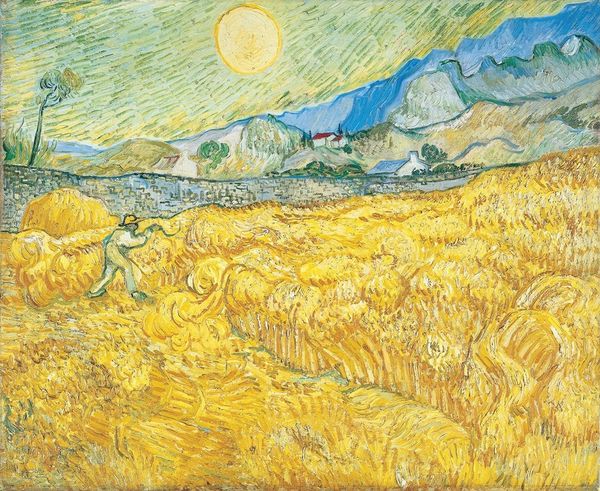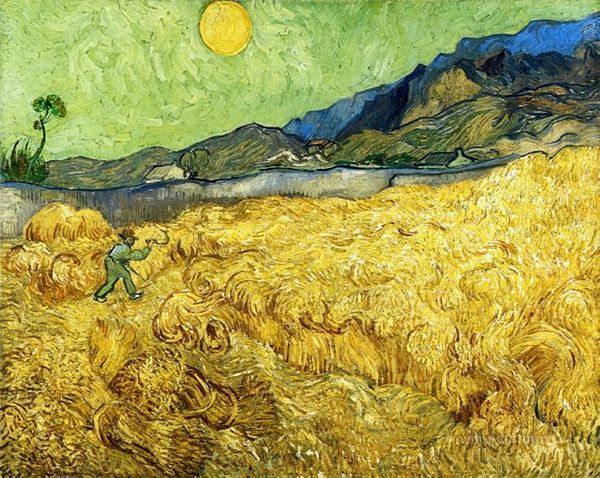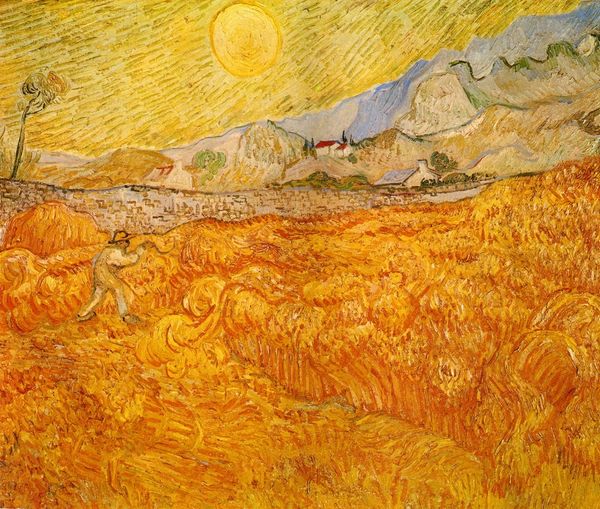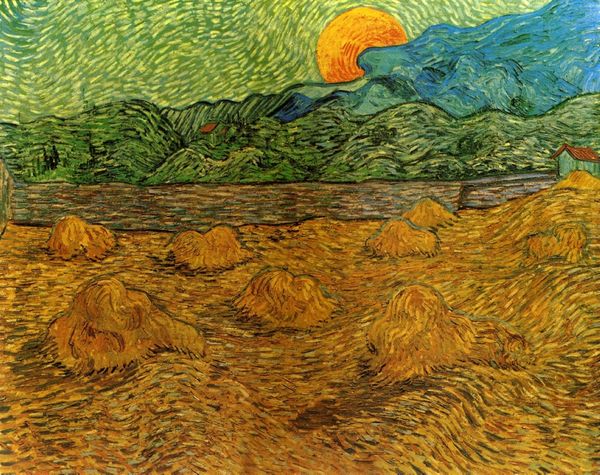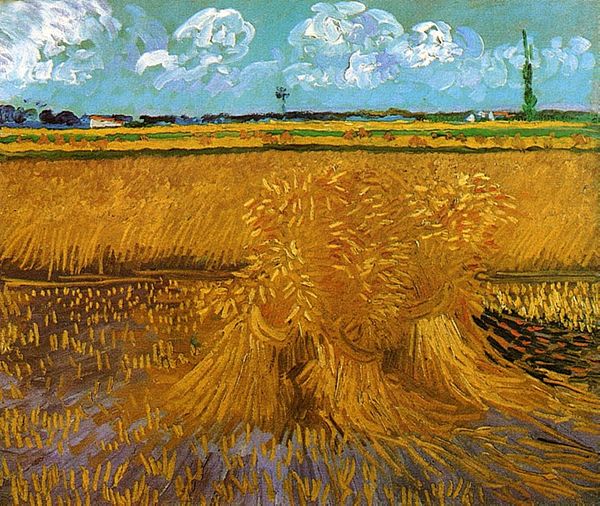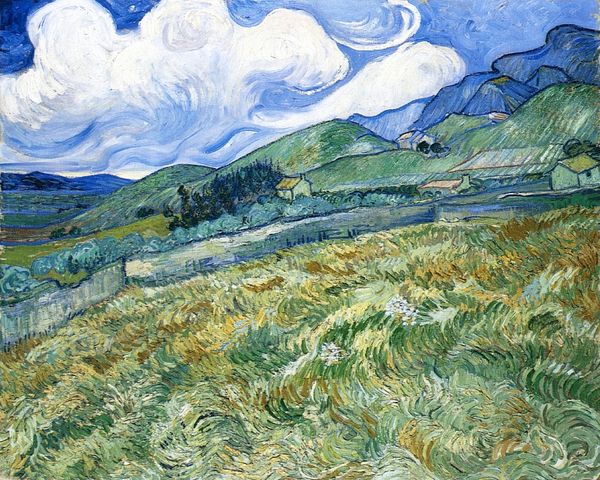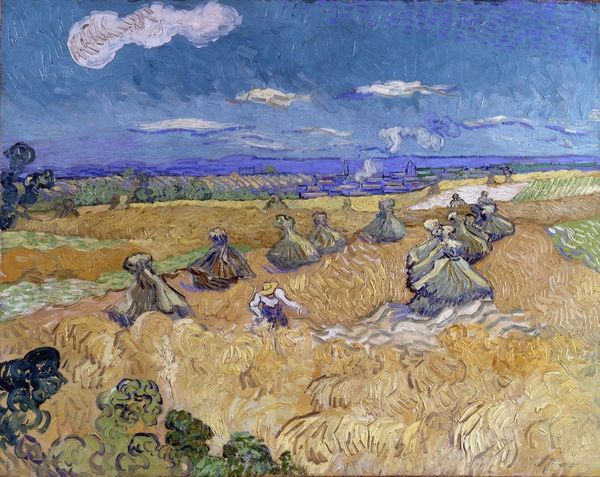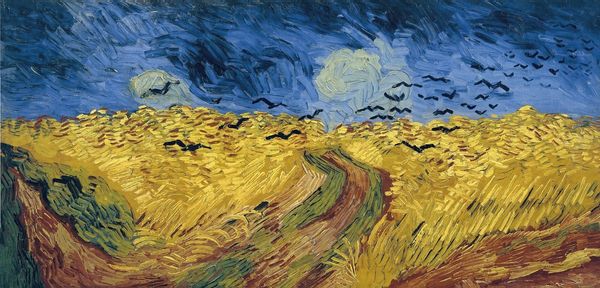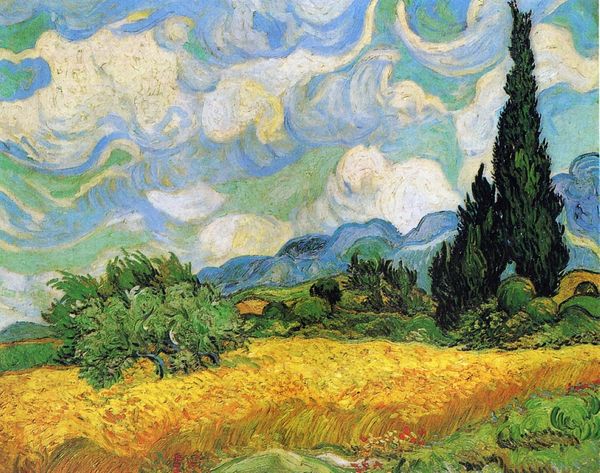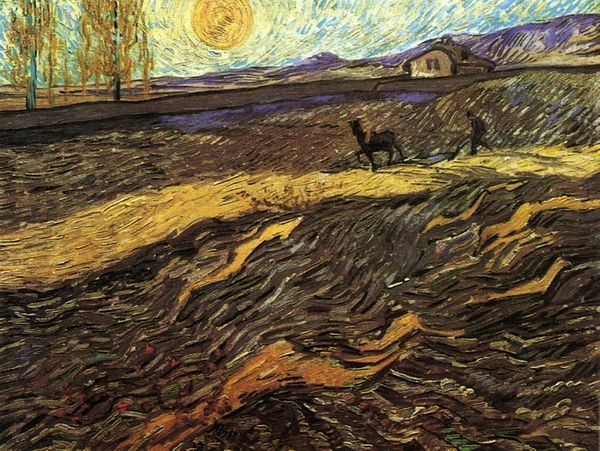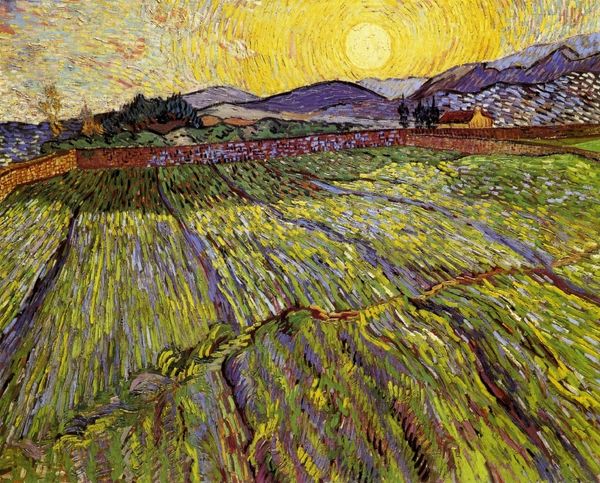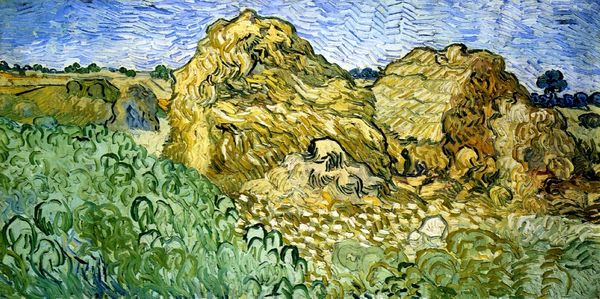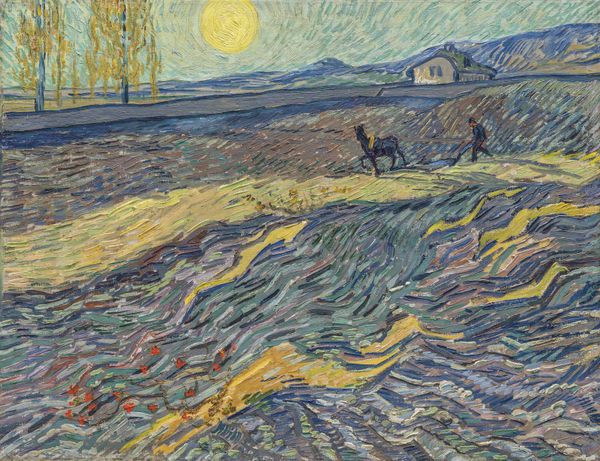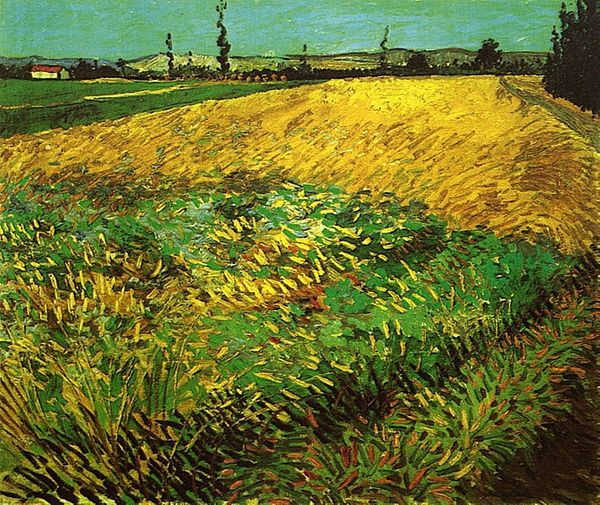
painting, oil-paint
#
self-portrait
#
narrative-art
#
dutch-golden-age
#
painting
#
oil-paint
#
landscape
#
figuration
#
oil painting
#
genre-painting
#
post-impressionism
#
modernism
#
realism
Dimensions: 72 x 92 cm
Copyright: Public domain
Curator: Vincent van Gogh painted "The Reaper" in 1889. It's currently held at the Kröller-Müller Museum in Otterlo. What strikes you first? Editor: The oppressive heat. A relentless, almost feverish atmosphere created by that sweltering yellow dominating everything. It’s tactile too; you can almost feel the dry, sharp stubble of the wheat under your hands. Curator: The solitary reaper is bent, working under the scorching sun. He represents both the worker and a powerful metaphor. Consider the context: Van Gogh was in Saint-Rémy, a mental asylum, struggling with his mental health. This image of relentless labor echoes themes of mortality and fate that would be very important in that context. Editor: I see the repetitive brushstrokes enacting the continuous labor. It becomes almost meditative in its intensity. There's a formal beauty in the patterns—how the foreground echoes the shapes of the distant mountains under the radiating halo of the sun. That intense focus gives meaning. Curator: There is definitely more to this painting than formal observation. Remember the socio-political backdrop: class struggles, rural poverty, and the artistic turn towards Realism. This labor has significance to Van Gogh as it had been forced upon people of this period in history. Editor: Yes, but to ignore how the rhythmic application of pigment, the interplay of light and shadow builds to communicate deeper meaning? The brushstrokes aren't just depicting; they're also acting. Creating visual drama between the solitary figure in the wheat field below an orb-like sun, the overall tension that permeates the scene. Curator: I agree that these patterns add the emotive context to the scene itself, but also remember that we must contextualize the work and that includes Van Gogh's inner life as he painted this work! These factors should be more deeply engaged with. Editor: But the beauty here, the emotional power resides in how form embodies content. Whether that be the figure, that sun, the hay stacks, and mountains themselves! Curator: Ultimately, it is impossible to separate form from historical context. These considerations provide context to understanding these works. Editor: It all meets together in his artistic act. A stunning painting that brings more into play than might meet the eye at first.
Comments
No comments
Be the first to comment and join the conversation on the ultimate creative platform.
